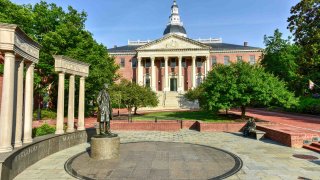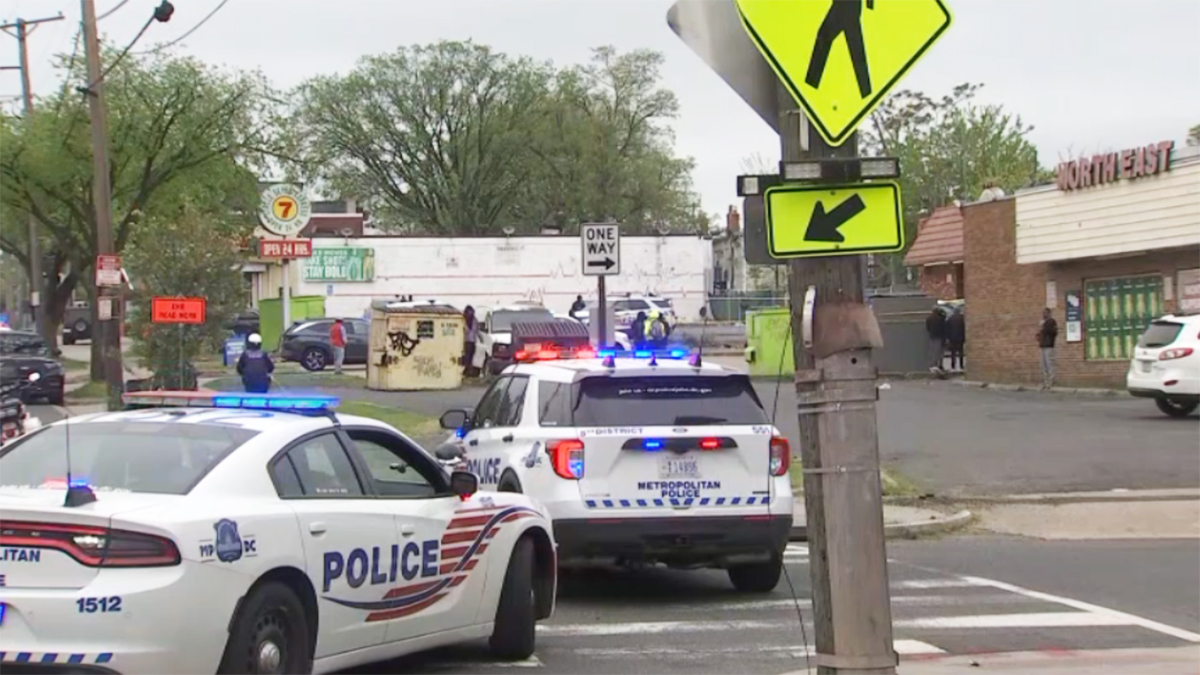
In March 1784, a person identified as “Negro Cardy” was paid for sweeping the chimney during the construction of the Maryland State House.
About a year and a half later, records show “Negro Nathan” was paid 2 pounds and 5 shillings for cleaning rooms and making fires at the center of government in Annapolis.
Nine years after that, following the formal completion of construction, a state ledger lists someone identified as “Negro Moses” was paid for cleaning.
Cardy, Nathan and Moses are believed to have been free Black men or women — possibly freed slaves — because they were paid directly.
We're making it easier for you to find stories that matter with our new newsletter — The 4Front. Sign up here and get news that is important for you to your inbox.
But their names are among the few historians have uncovered in a decades-long search for the identities of enslaved people, indentured servants and free Black Americans who helped build the State House at the center of Annapolis, the oldest U.S. state capitol in continuous legislative use.
Constructed from 1772 to 1797, the domed structure was completed 67 years before slavery was abolished in Maryland and 210 years before lawmakers issued issues a joint resolution apologizing for slavery.
“The likelihood is that many enslaved people worked within the building and the grounds during its history,” said Elaine Rice Bachmann, Maryand’s deputy state archivist. “But as payment for their work would likely have gone directly to the slaveholder, unless their labor is specified in the ledgers, their identities remain undocumented.”
Local
Washington, D.C., Maryland and Virginia local news, events and information
Chris Haley, director of the Study of the Legacy of Slavery program at the Maryland State Archives, zeroes in on the word “likely.”
“It’s frustrating that people were diminished to such a degree that searching for them is so challenging and so hard,” Haley said. “However because of that, you still have hope that there will be this piece of the puzzle that you will find in an auction, in a private paper that you had no idea would exist.”
So for the last 20 years, Haley has been scouring newspaper articles, census records, newspaper ads for runaway slaves, manumission deeds, coroner reports and other documents hoping to come across that missing piece.
Haley and other historians are following a paper trail to confirm what descendants of slaves have always known to be true about the State House. They’re uncovering the role of Black people in the origin of a historic landmark, which once served at the U.S. capitol and is an enduring symbol of American freedom.
While it feels neverending, Haley said the search “leaves your mind hopeful and your soul hopeful that if you keep searching... if you keep looking, you might find something which further clarifies and further dignifies them and confirms their existence.”
Haley is the nephew of Alex Haley, author of the Pulitzer Prize-winning novel “Roots” that traced his family story back to an enslaved African brought to Annapolis and sold, Kunta Kinte. The work, later retold in television movies and in a memorial at City Dock, is considered a turning point in appreciation for the history of Black Americans.
For him, the search is personal. He’s found old family photographs but can’t identify the person — someone whose identity holds a wealth of knowledge about family history. When his work is successful and people are able to unlock stories of their past, Haley said, “this is the type of thing you start crying about.”
One of the reasons that Black history has not been told in Annapolis is because of white historians who say there’s no proof. It’s not written. You told us we couldn’t even write, so what?
Janice Hayes-Williams, historian
Historians have been unable to ascertain any identifying details for Cardy or Nathan beyond their first names. Census records before 1790 only listed heads of households, Haley said, and it wasn’t until 1850 that every person in a household would be listed.
But historians believe when Moses was paid for his cleaning, he had been recently freed by Rezin Hammond, an army colonel who served in the Revolution. They found a manumission deed dated April 10, 1804 that named Moses along with six other freed slaves.
Hammond served in the General Assembly, suggesting that he may have helped Moses find work at the State House after freeing him. Hammond is believed to have freed all 70 of the people he held in slavery before he died in 1809.
A report from the Maryland State Archives identifies this as the only reference to a freed Black man named Moses in the county at the time of his documented work at the State House.
Records of the governor and his council from 1819 also show a “Mrs. Wells” who was paid $250 “for the hire of her Negro Man employed in cutting Poplar Trees.” Historians believe they’ve figured out who the woman was, and that she likely owned several enslaved people. The lack of any identifying details of the enslaved person make it difficult for historians to figure out who this man was.
When Haley considers the people who built the State House, he asks: “Those people who took credit, did they own human property?”
Bachmann said John Shaw, credited with being a primary contractor for the State House, is known to have had at least one indentured servant in his care and has recently been discovered to have had a second person, a young girl, indentured to him. Her race, age and circumstances are still unknown, Bachmann said.
“We know there are things that we don’t know and we don’t know if they are knowable,” Bachmann said. “But you can definitively say there were slave-owning people in Annapolis who were being compensated for the work of enslaved people in their care.”
For Janice Hayes-Williams, everything is clear when she walks the streets of downtown Annapolis.
A seventh-generation descendent of slaves, the historian said Clay Street is known to have been a site where enslaved people made bricks with moveable kilns. Just blocks from State Circle, Hayes-Williams believes enslaved people carried bricks from the yard to the State House during its construction.
“There are all kinds of references but there is not one sentence that says ‘I saw the Black people walking up Northwest Street with bricks,’” Hayes-Williams said. "There is no one that can say that, I don’t think. But guess what? I am still looking.”
Hayes-Williams points to the lack of written record of her ancestors practicing West African religious rituals in the Charles Carroll or Brice houses, but she’s certain they did because of artifacts uncovered by archaeologists and oral history.
“One of the reasons that Black history has not been told in Annapolis is because of white historians who say there’s no proof. It’s not written. You told us we couldn’t even write, so what?” Hayes-Williams said.
“This is our life. We lived there. Our people got lynched there. Our people made the bricks and took them to the places… Annapolis is finally coming around and understanding that we know our own history. How about that?”



